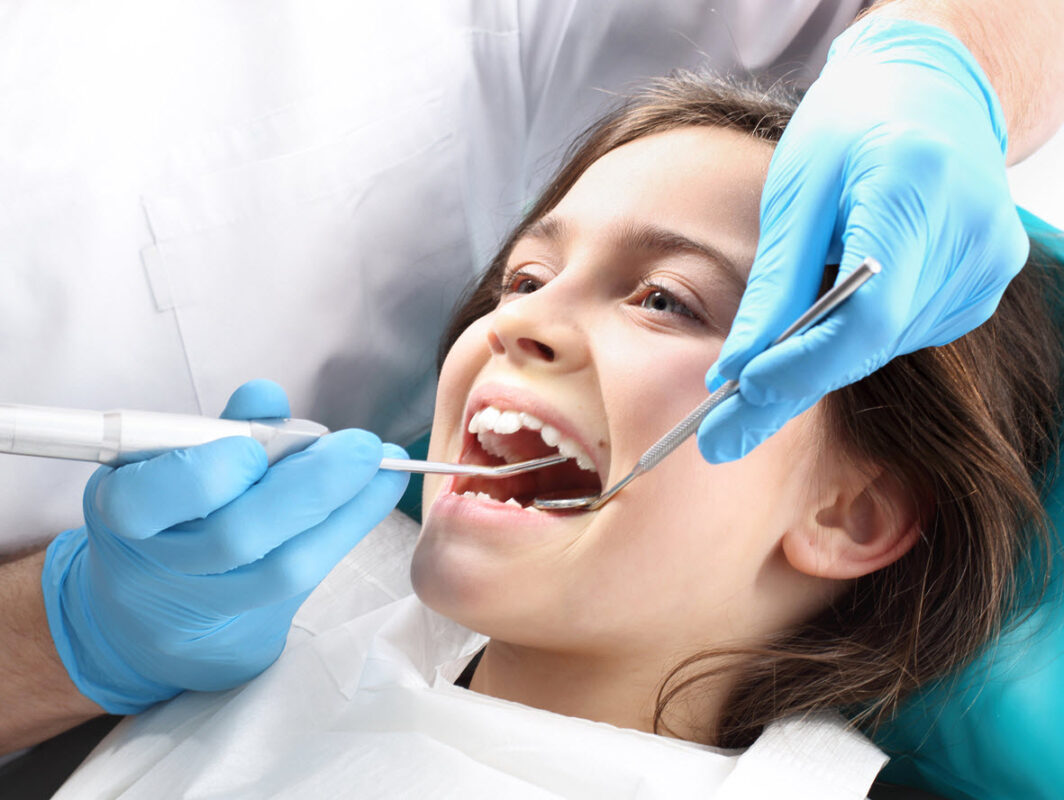Childhood Cancer Manifestation in the Oral Cavity
Sleep dentistry offers advantages for children undergoing procedures provided by a specialist paediatric dentist, especially for those with particular health challenges, such as manifestations of childhood cancer in the oral cavity. Children with cancer may present with various oral manifestations, including mucositis, xerostomia, and infections, which often result from the disease itself or as side effects from chemotherapy or radiation therapy. These conditions can make routine dental procedures significantly more challenging and potentially painful. In such scenarios, sleep dentistry provides a calm and controlled environment, ensuring that the child remains relaxed and still, thus facilitating safe and effective treatment. This approach minimizes trauma and stress, ensuring that even children with serious health challenges receive the best possible dental care with minimal discomfort. Furthermore, for children with cancer, the prevention of dental complications is crucial to avoid any interruptions in their primary cancer treatments. Using sedation or sleep dentistry, clinicians can perform comprehensive oral evaluations and necessary therapeutic procedures efficiently, thereby improving the child’s overall health and treatment experience.
Childhood cancer is the second-highest cause of death in children in the United States. Children newly diagnosed with Acute Lymphocytic Leukaemia (ALL) and Acute Myelogenous Leukaemia (AML) often have to get paediatric dental care to mitigate the oral manifestation resulting from the cancer treatment. The dental side-effects of cancer treatment include:
Hard Tissues
Extensive research into cancer treatment points to a relationship between microdontia and hypodontia of some of the permanent teeth following chemotherapy in patients under the age of 3. Specifically, there is evidence that the administration of chemotherapy medication during the initial stages of odontogenesis is linked to microdontia. These children have a greater likelihood of developing thin roots and enamel defects than their healthier siblings.
Soft Tissues
Children undergoing chemotherapy or radiation therapy may suffer from inflammation and ulceration of the soft tissue in the mouth. This is called mucositis and is significantly pronounced in children who have experienced high doses of chemotherapy and radiotherapy following stem cell transplants. Besides, these children showed an increased risk of oral infections. Overall, these conditions make it difficult for children to eat, drink or even talk. Besides, they will find it increasingly difficult to maintain oral hygiene, which is particularly detrimental given that the patients will often lack proper dental care before the diagnosis.
Hypo-salivation
Chemotherapeutic agents will often change the oral flora, which results in hypo-salivation. You want to consult with a paediatric dentist near me as to what can be considered normal under this condition.
Oral Care for a Child Diagnosed with Cancer
Oral care for a paediatric oncology patient requires a three-model approach. Specifically, the paediatric dentist will have to manage any acute dental pathology, eliminate any potential focus for sepsis, and finally investigate any orofacial region that shows any signs of malignancy.
Steps for Oral Care of a Paediatric Oncology Patient
Clinical Evaluation
As soon as you start with the Cancer treatment, you want to take the child in for a couple of clinical tests to help identify any existing oral infections and what potential sources of sepsis exist. An additional objective for this clinical evaluation would be to evaluate any possible dental and orofacial development anomalies.
During this visit, the dental practitioner will most likely conduct a head and neck exam, an intraoral soft tissue exam, a check on the dental and periodontal status, and finally, a comprehensive oral hygiene assessment.
Radiographic Evaluation
The specialist will capture a panoramic film to check on the child’s dental and oro-facial development at the radiographic evaluation. The assessment will also include periapical and bitewing filming, which comes in handy when diagnosing pulpal pathogens and any dental caries.
Treatment Plan
The chances are that as you deal with the cancer treatment, you do not want to take up a consistent defence against opportunistic oral infections. The treatment plan is expected to help prevent, stabilise and eliminate oral diseases.
Following the clinical and radiographic evaluation, urgent care under a GA could be suggested. In other situations, dental restorations, including temporisation, might be recommended.
Note that there have been situations in which there have been complete extractions of the pulpally involved teeth, primary teeth, and any potential soft tissue irritants, including orthodontic appliances. Finally, possible treatment could also include topical fluoride administration, dental scaling, and prophylaxis.
Patient Education
Having a sick child can be tough. It becomes increasingly challenging when you lack the proper knowledge to help with combating the oral manifestations following cancer treatment.
Specifically, you need to understand the different oral complications that come from cancer and its treatment. You will also require knowledge on how to minimise any of the discomforts the child might be experiencing. Finally, you will need education on how to facilitate the execution of the dental treatment plan given to you by the best specialist paediatric dentist in Brisbane.
During your clinical evaluation, you want to discuss the findings and the treatment plan they have come up with with the dentist. You should also seek clarification on what other oral side effects the child will likely experience following the chemotherapy. At this point, consider getting the patient information brochure, which should further inform the care of your child.

Oral Hygiene Tips
Tooth Brushing
As your child’s gum is already inflamed, you want to use a soft brush. It would be best to use paediatric fluoride toothpaste to brush both the teeth and tongue 2-3 times daily. If you can spare just a tad bit more, consider an end-tufted toothbrush or one that is recommended as being suitable for a paediatric oncology patient.
Flossing
If your child has tight contact points between their teeth, it is recommended that they floss at least once daily; for younger children, this is usually done by the parents. It is important to make sure flossing is done very gently to prevent any irritation to the gum, which may already be inflamed and irritated due to cancer treatment.
Mouth Rinses
There is a myriad of mouth rinses that you can use for your child. These range from normal saline to sodium bicarbonate and aqueous chlorhexidine. It has been found that there are patients that prefer using neutral sodium fluoride. The latter works particularly well with patients with prolonged Xerostomia due to head and neck radiotherapy to help prevent progression or initiation of caries.
It is that as you leave your appointment with a paediatric dentist, you have a thorough understanding of your child’s dental needs before, during and after cancer treatment.

Management of Oral Mucositis
Oral mucositis comes with excruciating pain, which can be quickly managed using systemic analgesics prescribed by your paediatric oncologists. Additionally, consider using topical 2% viscous xylocaine on the inflamed soft tissue.
A quick fix for the pain at home would be to have an ice pack on their throat and neck following the chemotherapy. A popsicle could also offer immediate relief and add a little spark to the otherwise sad moment.
You want to avoid petroleum jelly, Vaseline, or any popular mineral oils for the lips as these only increase tissue dryness and inflammation risk. Instead, invest in a lanolin-based product, which can be applied using a cotton dub.
It would be prudent to monitor the oral mucosa, as this could indicate an oral infection. Additionally, consider getting systemic meds for any fungal and viral lesions that might pop up. For the mucosal haemorrhage, you want first to have a paediatric dentist examine the child to find out the source of the haemorrhage. After that, a WET gauze pressure pack can be applied to help stop the bleeding. In some cases, your dentist or oncologist may prescribe Tranexamic acid, which can be used as a tablet or mouthwash.
Finally, having your child’s face swell up can be frightening. You want to stay calm and avoid panicking, as this may occur during the following radiotherapy. Having ice packs on their faces a couple of times a day should keep the swelling significantly low.
Long Term Effects of Oral Manifestations Following Cancer Treatment
Going into cancer treatment, you are likely looking forward to the ultimate recovery of your little one. The last thing on your mind would be the long term effects of the oral complications following Cancer treatment.
Some of these long term effects include:
Taste Alteration
If your child is going through high dose head and neck radiation, you might want to be prepared for long term taste alterations. Fortunately, this should last a maximum of four months. To prepare your child for the same, you want to have some form of nutrition counselling, which could come in handy as they ease into their new normal.
Xerostomia
For Xerostomia, you want to find a non-alcohol based mouth rinse for oral hygiene. Additionally, consider a saliva substitute, like methylcellulose, if your child complains of cottonmouth. You also want to have them frequently take fluids, especially water. With this side effect, you want to work closely with your paediatric dental consultant.
Radiation Caries
Often when your child suffers from Xerostomia, they will also have radiation caries. You want to have them on multiple topical fluoride treatments prescribed by the paediatric dentist and regular dental reviews.
Muscular Trismus
The moment your child experiences limited jaw opening, you want them checked out for Muscular Trismus. Your dental consultant will often prescribe physiotherapy and jaw exercises to help remediate the TMJ damage or the masticatory muscles.
Oro-Dental Developmental Disturbance
Note that if your child is diagnosed with cancer under six years of age, they are at a higher risk of developing oro-dental developmental disturbances. You will probably see some tooth agenesis, pronounced loss of shape on the existing crowns, enamel hypoplasia, and some loss in the alveolar bone height.
Understandably, this can be overwhelming. You want to have your paediatric dental specialist look at your child to assess the disturbances and work with other professionals to minimise the effect of these disturbances on your child.
When planning for multidisciplinary care for the child diagnosed with cancer, you want to collaborate closely between their oncologists and paediatric dentists. This is mainly because odontogenic infections during cancer treatment can potentially have life-threatening impacts.
At our dental clinic in Brisbane, we excel at paediatric dental care. We work with your health funds partner of choice to ensure that your child finds relief following their cancer treatment. We work with you to provide you with a treatment plan and empower you to manage any flare-ups in the future.




































